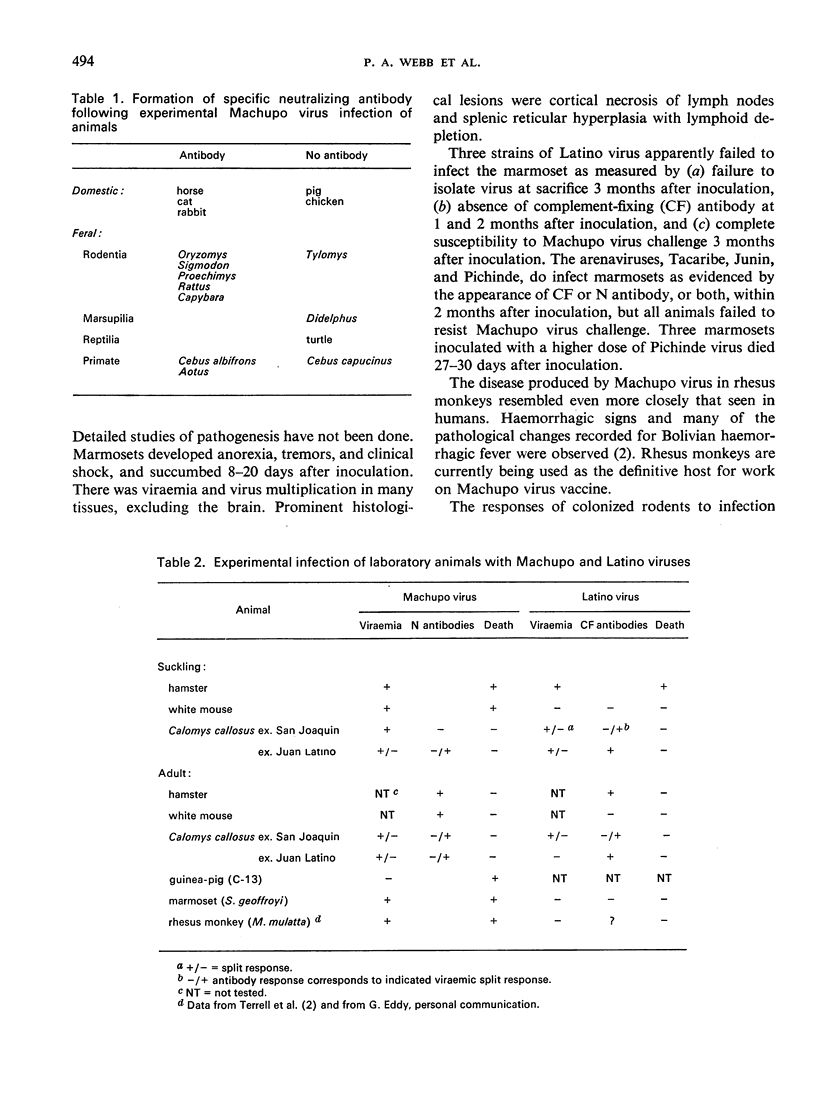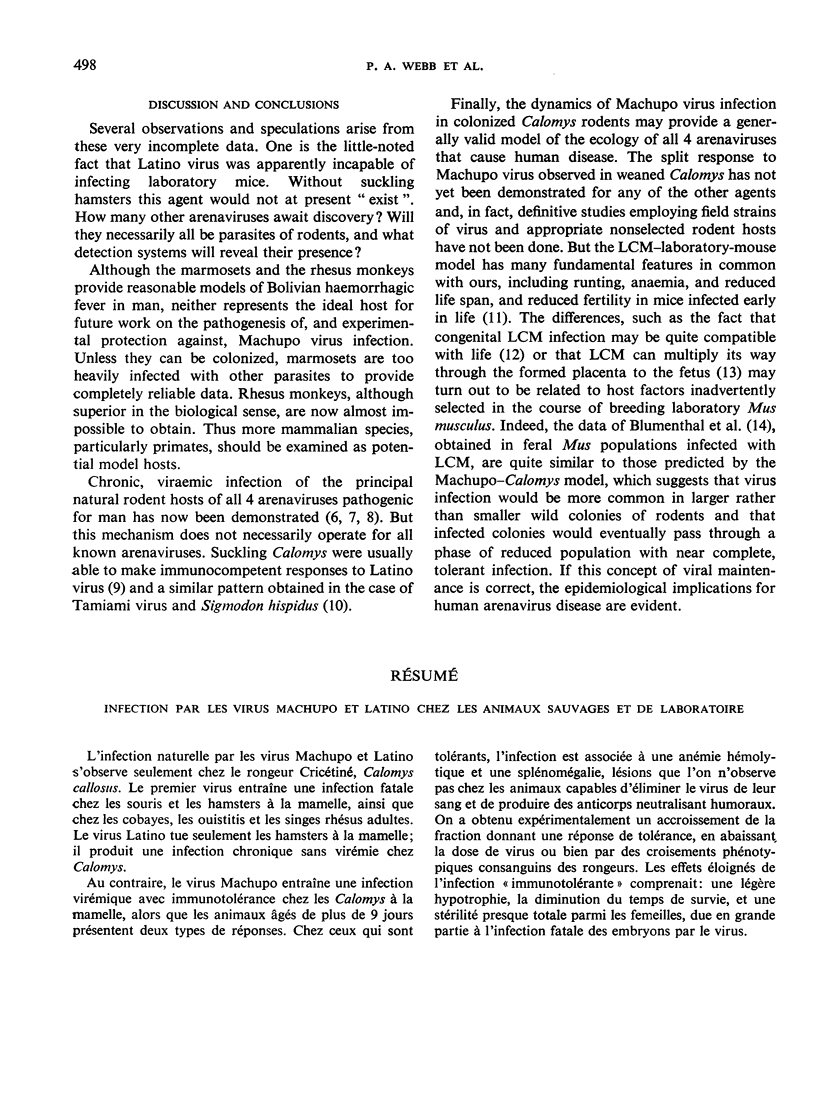Abstract
Natural infection with Machupo and Latino viruses occurs only in the cricetine rodent Calomys callosus. Machupo virus induces fatal infection in suckling mice and hamsters, and in adult guinea-pigs, marmosets, and rhesus monkeys. Latino virus kills only suckling hamsters; it produces chronic but non-viraemic infection in Calomys rodents.
Machupo virus, in contrast, induces a viraemic immunotolerant infection in suckling Calomys, and a split response in animals more than 9 days of age. Tolerant infection is associated with haemolytic anaemia and splenomegaly, lesions not observed in animals able to clear viraemia and produce circulating neutralizing antibodies. Experimental increase in the fraction of tolerant response was obtained by decreasing the virus dose or by phenotypic inbreeding of rodents. Long-term effects of tolerant infection included mild runting, decreased survival time, and almost total sterility among females, largely caused by fatal virus infection of embryos.
Full text
PDF






Selected References
These references are in PubMed. This may not be the complete list of references from this article.
- Blumenthal W., Ackermann R., Scheid W. Durchseuchung mit dem Virus der Lymphozytären Choriomeningitis in einem Endemiegebiet. Dtsch Med Wochenschr. 1968 May 10;93(19):944–948. doi: 10.1055/s-0028-1105169. [DOI] [PubMed] [Google Scholar]
- Justines G., Johnson K. M. Immune tolerance in Calomys callosus infected with Machupo virus. Nature. 1969 Jun 14;222(5198):1090–1091. doi: 10.1038/2221090a0. [DOI] [PubMed] [Google Scholar]
- Mims C. A. Effect on the fetus of maternal infection with lymphocytic choriomeningitis (LCM) virus. J Infect Dis. 1969 Nov;120(5):582–597. doi: 10.1093/infdis/120.5.582. [DOI] [PubMed] [Google Scholar]
- Mims C. A. Observations on mice infected congenitally or neonatally with lymphocytic choriomeningitis (LCM) virus. Arch Gesamte Virusforsch. 1970;30(1):67–74. doi: 10.1007/BF01262584. [DOI] [PubMed] [Google Scholar]
- Pollard M., Sharon N., Teah B. A. Congenital lymphocytic choriomeningitis virus infection in gnotobiotic mice. Proc Soc Exp Biol Med. 1968 Mar;127(3):755–761. doi: 10.3181/00379727-127-32793. [DOI] [PubMed] [Google Scholar]
- RAUSCHER F. J. A virus-induced disease of mice characterized by erythrocytopoiesis and lymphoid leukemia. J Natl Cancer Inst. 1962 Sep;29:515–543. [PubMed] [Google Scholar]
- Traub E. THE EPIDEMIOLOGY OF LYMPHOCYTIC CHORIOMENINGITIS IN WHITE MICE. J Exp Med. 1936 Jul 31;64(2):183–200. doi: 10.1084/jem.64.2.183. [DOI] [PMC free article] [PubMed] [Google Scholar]
- Walker D. H., Wulff H., Lange J. V., Murphy F. A. Comparative pathology of Lassa virus infection in monkeys, guinea-pigs, and Mastomys natalensis. Bull World Health Organ. 1975;52(4-6):523–534. [PMC free article] [PubMed] [Google Scholar]


